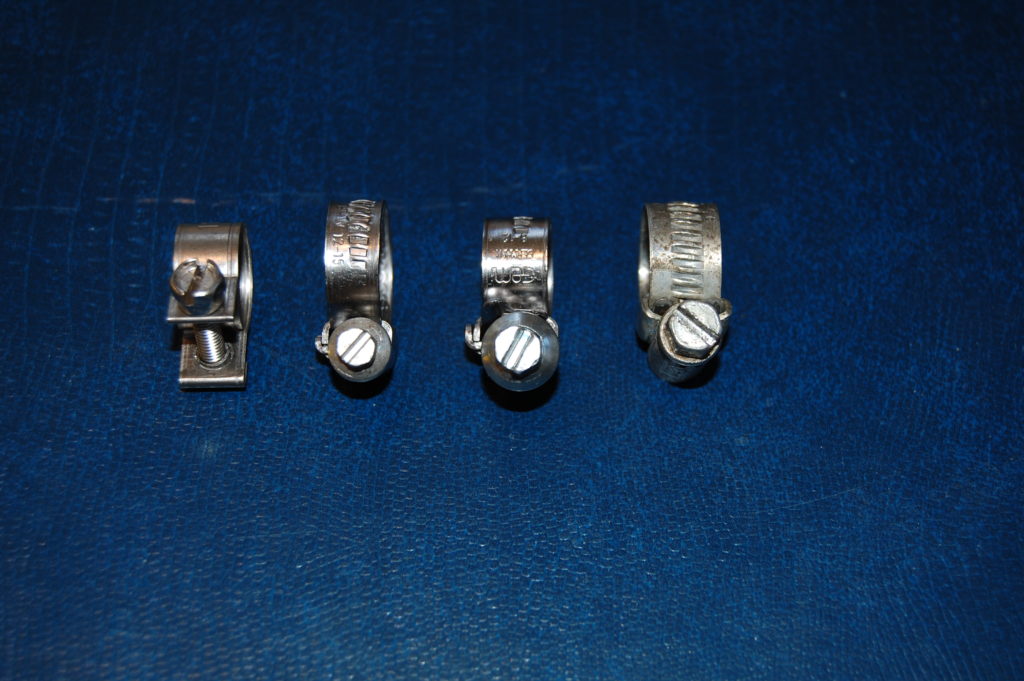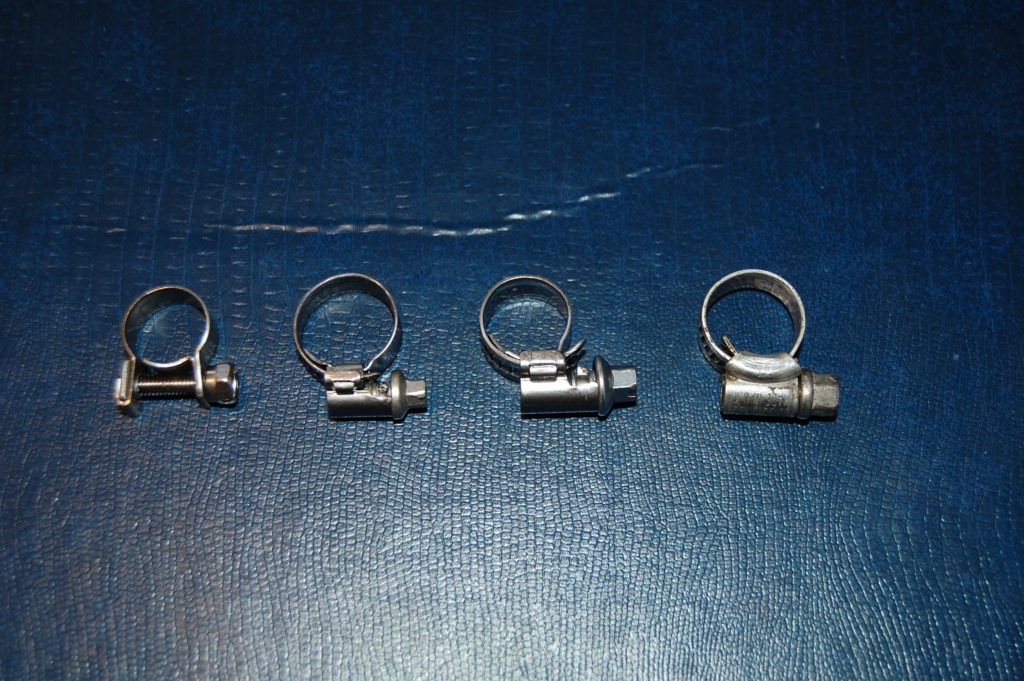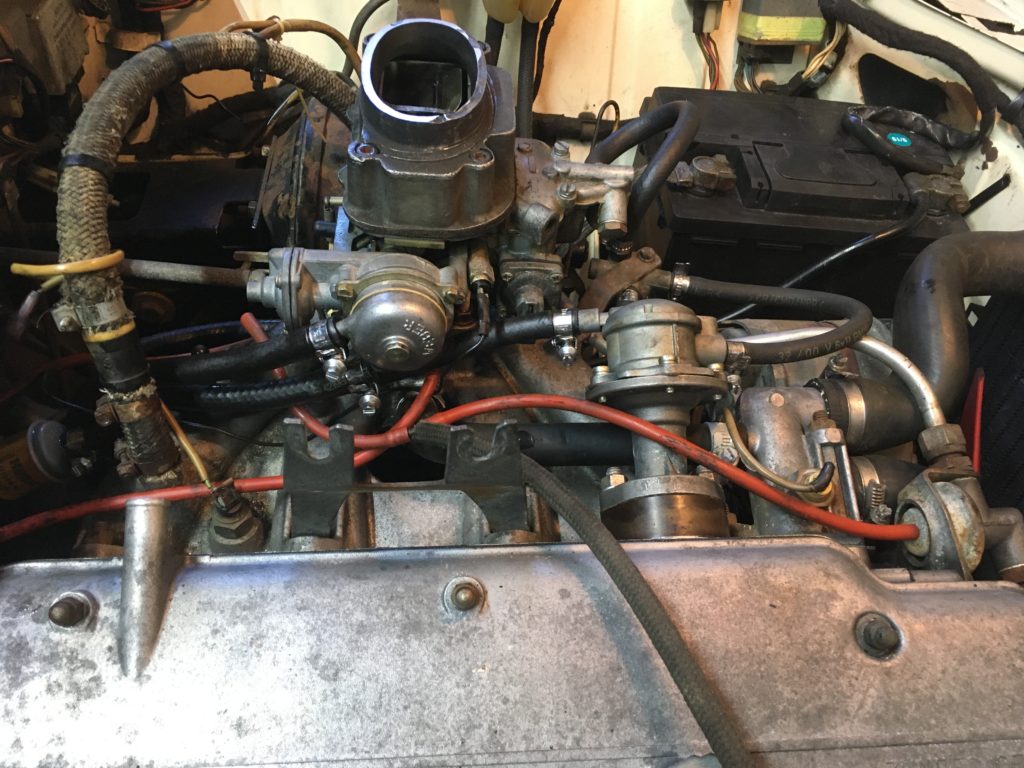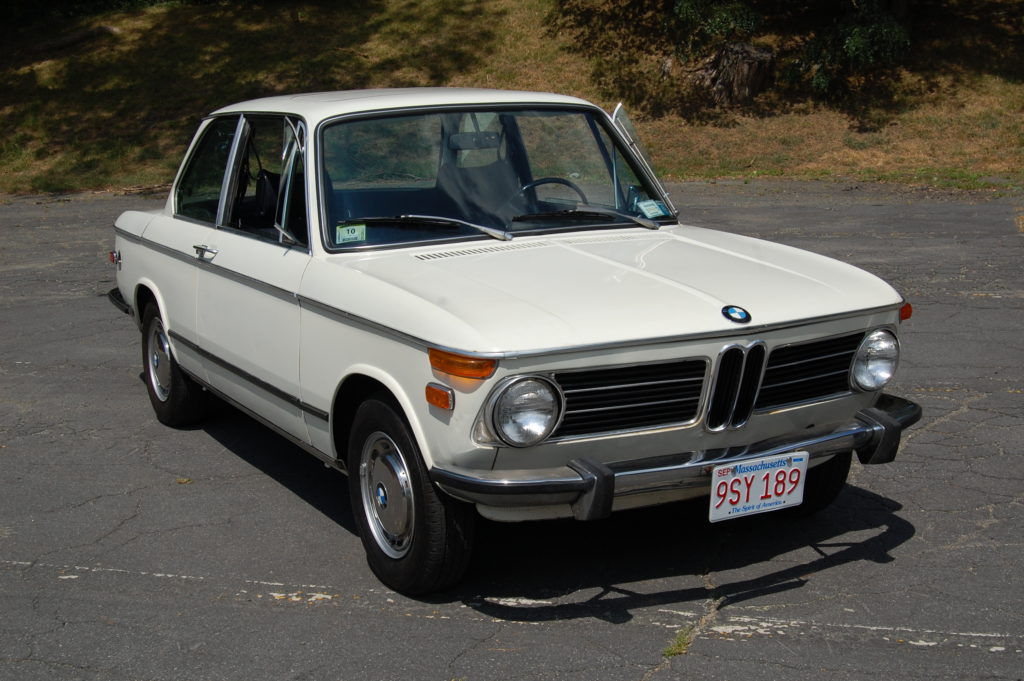Two weeks ago I wrote about my preemptive strike to banish generic hardware-store hose clamps—the ones with slots cut into them for the worm gear to bite into, where the hose’s rubber winds up extruding through the slots over time—from the engine compartment of Hampton, my 48,000-mile survivor ’73 2002, lest the Hose-Clamp Police call me out when the car goes on Bring a Trailer this spring. I ended the piece by saying, “While I was in the neighborhood, I noticed that about half of the little clamps on the fuel lines were of the slotted hardware-store variety. Since I was in a hose-clamp-compliance state of mind, I ordered a full set of correct ones for the carburetor, fuel pump, and filter. I’ll get those installed next week.”
Well, to paraphrase the classic Pogo cartoon, I have met the enemy, and that hose-clamp police officer is me.
As I said in my last piece, I’ve always thought that a 2002’s coolant hoses and low-pressure (carbureted) fuel lines originally had worm-drive clamps with hex heads, just not the hardware-store style with slots cut in the clamps; instead, they’re the high-quality clamps with raised ridges for the worm screw to bite on, and a raised 6-mm hex head that you can use a flex-nut driver on. I thought that only the high-pressure fuel lines on an injected car (e.g., a tii) originally had the high-pressure-style clamp with a little bolt with a slotted head that threads into a little nut to pull both sides of the clamp together without the possibility of the worm screw slipping or stripping. What was on Hampton’s fuel lines was a combination of el-cheapo hardware-store clamps and decent non-slotted Jubilee clamps, although they had 7-mm hex-nut heads.
I wanted to ditch the cheap clamps and make everything uniform, and, if not concours-correct, at least of the correct style. There were also a few other medium-sized Jubilee clamps used on the smaller coolant hoses, like the ones under the cowl that plumb the heater box, so I would’ve been perfectly happy to buy some that matched the Jubilees already on the fuel line. Unfortunately, I couldn’t find a source for those, so I decided to replace all the fuel-line clamps with those with 6-mm hex heads like the ones I’d installed on the radiator hoses a few weeks ago.

These looked correct to me from the photo.
I assumed that I’d do what I usually do and buy some German-made Gemi or Norma clamps, but I hunted around a bit online and found a vendor on Amazon selling what were advertised as BMW OEM 12–15-mm clamps for fuel and evaporative lines on everything from the 114 (2002) through E36-era cars. No BMW part number was listed, but from the photo, they looked right, and at $9.99 for a pack of four, they weren’t unreasonably priced. I ordered two packs.
However, when the BMW clamps arrived, I immediately found three things wrong. First, I had miscounted: Hampton still has the plumbing for the fuel return line in place, so counting the clamps on the hoses that plumb that, plus the clamps for the carb, fuel pump, and fuel filter, I actually needed ten. Second, I’d forgotten that the little hoses plumbing the water choke on the carburetor also had hardware-store clamps on them, and it would be silly to leave those hanging off the side of the carb, so if I was going to replace those at both ends of the coolant lines, that’s another four clamps.
But more important, when I looked at the BMW clamps, although they looked decent and said “BMW” on them, the hex head was only 5-mm. The original clamps on the radiator hoses had 6-mm heads. While I normally don’t get OCD over this stuff, the idea of having engine-compartment hose clamps requiring three different nut-driver sizes (5-mm for these, 6-mm for the original ones and the Gemis I’d just installed, and 7-mm for the Jubilees under the cowl) really bugged me. Plus, although it wasn’t a showstopper, I don’t have a 5-mm flex-nut driver, just 6-mm through 8-mm.
So I went online to BelMetric Fasteners. They’re local to me in Tyngsborough, Massachusetts, so they get stuff to me quickly. I ordered fifteen Gemi CR12 (8–12-mm) clamps. With shipping, it came to $28. Nearly $50 for two shipments of little hose clamps was a lot for a guy who sweats over $5 differences in parts costs, but it seemed like money well spent to put my hose-clamp issue to bed.
Two days later, the clamps from BelMetric arrived. I had at Hampton, joyfully changing every clamp on the fuel and coolant lines to the choke, and snugging them all down with the 6-mm nut driver Then I leaned back to admire my handiwork.
To my stunned surprise, I didn’t like it.
The stainless-steel clamps—and there were a lot of them high up on the engine—looked way too new in comparison with the weathered survivor engine compartment. I also felt, from an aesthetic standpoint, that the size of the worm-drive assembly on the new Gemi clamps seemed big and chunky relative to the small size of the clamps. This is the kind of thing that I normally don’t care about, but I had a visceral reaction to it. More important, I was concerned about it not presenting the kind of whole, complete, and consistent story that a car needs to exude in order to bring the money on BaT.

I didn’t like this at all.
Crap.
I’d previously read that shiny fasteners could be dulled by soaking them in vinegar, so I took one of the clamps and left it in vinegar overnight. It didn’t look any different in the morning. And obviously it didn’t shrink the size of the worm drive.

This is the correct Norma “cheese head” fuel-hose clamp for a 2002.
I shot the engine-bay photo above and posted it to my braintrust on Facebook, asking if there was some magic combination of vinegar, hydrogen peroxide, Coca-Cola, salt, and battery acid that could be used to dull the shine on the clamps. Incredibly, it generated 147 responses (you can find the thread here). These ranged from advice that the clamps I’d bought were stainless, and thus were going to be difficult to dull, to direct and helpful answers to the question (recommendations for smearing them with Cosmoline, dirt, oil, the fluid I’d just drained from my differential, using abrasion, electrocution—the clamps, not me—soaking them in Liquid-Plumr, putting them in a tumbler with ceramic beads, and other suggestions) to people saying, “Just drive the car; they’ll naturally dull” to folks implying that my head wound last month had been more extensive than I’d let on, since I was obviously behaving outside traditional Hack Mechanic norms.
I mean, really: Rob Siegel obsessing about hose clamps—isn’t that a sign of a stroke?
A number of folks offered their view that hose clamps are a normal wear-and-tear part on a car, and that shiny new clamps don’t detract from the image of a car as largely original; they simply show that a car had had recent maintenance, which is a good thing.
But my friends Paul Wegweiser and Tom Jones (professionals both) cut right to the chase and said that, in fact, I’d gotten the clamps wrong—that all 2002s, not just carbureted ones, originally used the high-pressure-style clamps on the fuel lines, the ones where an actual machine screw threads into an actual nut to pull both sides of the clamp together. Tom was kind enough to send me this stock photo of what I should be using.
Below I line up all the hose clamps discussed above and show them all together. On the left is a generic high-pressure-style clamp. This is one of the ones I used on the Lotus, so it has a hex-head instead of a cheese head, but still you can see the machine-screw-into-nut design. Next is the BMW clamp with the 5-mm head. To its right is the Gemi clamp with the 6-mm head. Finally, on the right is one of the old Jubilee clamps with the 7-mm head that was on the car.

The mugshot of the usual suspects.
But you need to view their mugs in profile to see why I thought the worm-drive assembly on the little Gemi looked out of proportion. Compared with the others, it kind of is:

Okay, everybody turn to the left. From this view, you can see that the worm-drive assembly on the side of the Gemi clamp (second from right) really is kind of big relative to the small size of the clamp.
One of the Facebook comments was that I could simply rotate the clamps so that the drive mechanisms are underneath the hoses. I did this, and it took some of the edge off their appearance, but they still seemed a bit in-your-face to me.

This is with the clamps on the fuel lines rotated.
Still, it bugged me, and I felt that even if I needed to drop another thirty bucks on the correct galvanized (not chrome) Norma cheese-head high-pressure-style clamps, it would be money well spent. I messaged Paul and Tom asking for a source. Paul offered that BelMetric probably has them (they do, but at $4.31 each, they’re a little pricey). Then Tom messaged me with a source not only for the clamps but for the correct cloth-braided hose for both the fuel line and the brake servo (the old-looking one on the left side of the photo above). Then both Tom and Paul mentioned using dry-ice blasting to clean up the metal components in the engine compartment.
I stopped in my tracks.
Look at the not terribly lust-inducing photo above. It shows a fairly original engine compartment, with largely grease-free but unrestored metal surfaces. The fuel lines are new, because replacing them if they’re pillowy soft or rock-hard is what I do when I sort out a car. The brake servo line on the left is original, and looks, well, old, but I pulled it out, held my thumb over one end, blew into the other end with an air nozzle hooked to my compressor, verified that the hose didn’t leak, and put it back in. Again, that’s the kind of thing I do.
The original cloth-braided hose in the foreground runs from the original charcoal canister on the inner fender. It’d normally run to the intake manifold, but I’ve disconnected and plugged it to eliminate the possibility of a vacuum leak. On the right side of the engine compartment, the original exhaust-gas-recirculation (EGR) valve is still present and still plumbed to both the intake and exhaust manifolds. I’ve left this all in place because it helps to establish the provenance of the car as a 48,000-mile survivor.
I’m not making myself clear. Let me try again.
My friends Paul Wegweiser and Tom Jones are pros. They create engine compartments that are works of art. I don’t. It’s not that I fundamentally can’t, but regarding what to do next with Hampton, I stopped and reasoned with myself: You could buy a third set of hose clamps, and the correct cloth-braided fuel hose, and a new brake-booster hose, and you could blast and paint the air-cleaner assembly to make it look better, but are you then going to disassemble the upper engine components (including the EGR plumbing) and have them dry-ice or vapor-blasted, and then remove and repaint the brake master cylinder and booster, and then pull the engine and sandblast and repaint the engine compartment to remove the small blemishes of surface rust around where original plastic wire ties snap into their holes?
No? Then quit fixating on the goddamned hose clamps.
Most of them won’t even be visible under the air-cleaner assembly. Yes, it made sense to me to worry about their shininess and correctness, but when viewed in the larger context of the engine compartment as a whole, and the car as a whole, it’s just silly.

The bigger picture.

The even bigger picture.
Yeah, who am I kidding? I’ll still probably order the damn cheese-head high-pressure-style hose clamps. Because once you’ve gone clamps, you can’t go back.—Rob Siegel

This is now me: THE CLAMPS!
Rob’s upcoming book, The Best Of The Hack Mechanic: 35 years of hacks, kluges, and assorted automotive mayhem from Roundel magazine, will be out in the spring. His other seven books are available here on Amazon. Signed copies can be ordered directly from Rob here.





















